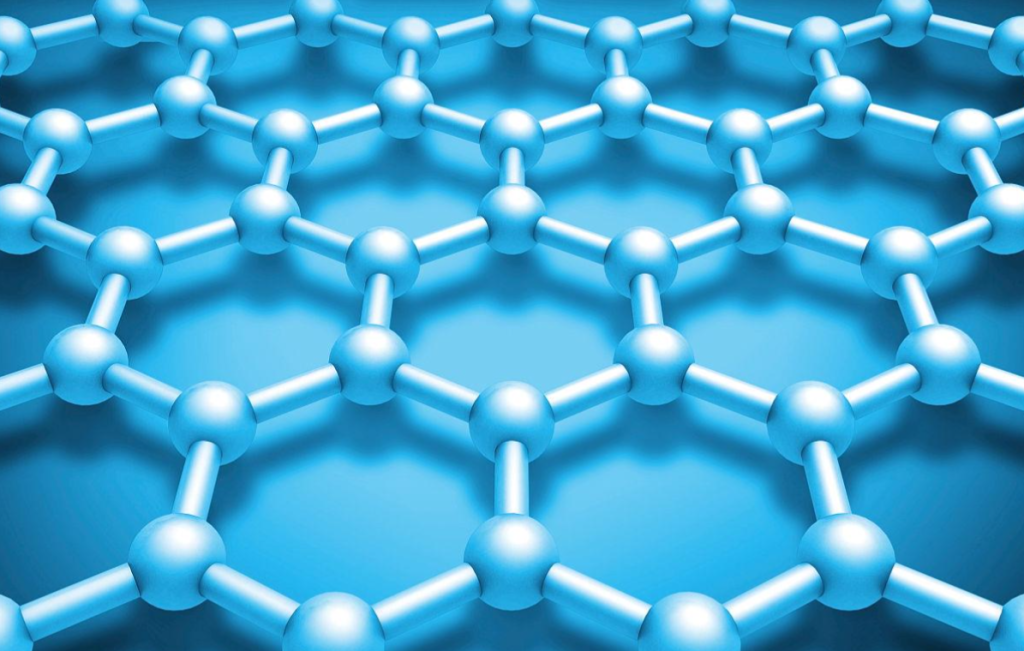Graphene in Wearable Medical Sensors: Revolutionizing Health Monitoring
The convergence of nanotechnology and digital health is transforming how we monitor our bodies. Among the most promising materials enabling this transformation is graphene — a single layer of carbon atoms arranged in a two-dimensional honeycomb lattice.

Graphene’s extraordinary electrical conductivity, mechanical flexibility, and biocompatibility make it a perfect material for next-generation wearable medical sensors. From continuous glucose monitoring to real-time heart rate and sweat analysis, graphene is redefining what’s possible in personalized health tracking.
This article explores how graphene is reshaping wearable medical technology, its mechanisms, advantages, challenges, and future impact on healthcare systems.
Why Graphene is Ideal for Wearable Medical Sensors
Traditional medical sensors, while accurate, often suffer from rigidity, limited skin compatibility, and high power consumption. Graphene overcomes these barriers through a unique combination of material and electronic properties:
-
High Conductivity – Graphene allows ultra-fast electron transport (up to 200,000 cm²/V·s), ensuring sensitive and accurate biosignal detection.
-
Mechanical Flexibility – Its atom-thick structure can bend, twist, and stretch, allowing seamless integration with fabrics or skin patches.
-
Biocompatibility – Graphene interacts safely with biological tissues, making it ideal for long-term skin contact or even implantable sensors.
-
Transparency – Graphene’s optical transparency allows it to be used in invisible biosensors embedded in smart textiles or transparent films.
These features make graphene a superior alternative to conventional materials like indium tin oxide (ITO), gold, or silicon-based electrodes.
Working Principles of Graphene-Based Biosensors
Graphene’s ultra-sensitive surface is capable of detecting minute biochemical changes — even at the molecular level. The core mechanisms include:
1. Electrochemical Detection
Graphene can measure the change in electrical resistance or current when biological molecules (such as glucose or lactate) interact with its surface.
For example, in glucose sensors, graphene electrodes functionalized with glucose oxidase (GOx) produce a measurable current proportional to blood sugar levels.
2. Capacitive and Piezoresistive Sensing
When used in flexible films, graphene can detect physical deformations, such as heartbeats, blood pressure changes, or respiration rhythms — based on variations in capacitance or resistance.
3. Optical and Fluorescent Sensing
Graphene and its derivatives (like graphene oxide, GO) can quench or enhance fluorescence signals from biomolecules, enabling optical biosensing for proteins, hormones, or DNA.
Applications of Graphene in Wearable Medical Devices
1. Non-Invasive Glucose Monitoring
Traditional blood glucose tests require finger pricks, which are invasive and uncomfortable. Graphene-based sensors can detect glucose levels non-invasively through sweat, saliva, or interstitial fluids.
-
Example: Graphene–enzyme hybrid sensors measure glucose oxidation current in sweat.
-
Advantage: Continuous glucose monitoring without needles or blood samples.
2. Heart Rate and ECG Monitoring
Graphene’s conductivity and flexibility make it ideal for skin-mounted electrodes that detect electrocardiogram (ECG) or heart rate variability (HRV) signals.
-
Example: Graphene-coated textile electrodes provide real-time ECG data during exercise or sleep.
-
Advantage: Soft, stretchable, and accurate alternative to traditional gel-based electrodes.
3. Sweat and Electrolyte Analysis
Human sweat contains vital biomarkers such as sodium, potassium, cortisol, and lactate. Graphene-based sweat sensors can continuously track these to assess hydration, fatigue, and stress levels.
-
Application: Sports science, fitness, and medical diagnostics.
-
Example: Graphene oxide membranes functionalized with ion-selective layers for sodium detection.
4. Temperature and Pressure Sensing
Graphene’s high thermal conductivity enables temperature-sensitive patches that can detect fever or inflammation. Meanwhile, its mechanical sensitivity allows for pressure mapping in prosthetics or rehabilitation monitoring.
5. Wearable EEG and Brain-Computer Interfaces (BCIs)
Graphene’s low noise and high signal fidelity enable accurate detection of neural electrical signals for brain-computer interfaces or epilepsy monitoring.
-
Example: Graphene dry electrodes that adhere comfortably to the scalp.
-
Advantage: Improved signal-to-noise ratio over metal electrodes, with better comfort for long-term wear.
Case Studies and Research Highlights
-
University of Texas at Austin: Developed a graphene-based sweat sensor that monitors glucose and cortisol simultaneously for real-time metabolic tracking.
-
Seoul National University: Created graphene ECG patches capable of capturing medical-grade signals while maintaining flexibility during movement.
-
MIT & Harvard: Designed graphene tattoos — ultra-thin electronic tattoos that adhere to skin and measure heart rate, hydration, and body temperature continuously.
-
UC San Diego: Demonstrated a graphene-lactate biosensor embedded in a headband for monitoring muscle fatigue in athletes.
Integration with Wearable Technology
Graphene’s scalability and printability allow it to be integrated into various wearable platforms:
-
Smart Patches: Skin-mounted flexible circuits powered by graphene electrodes.
-
Smart Textiles: Conductive graphene fibers woven into fabrics for real-time body monitoring.
-
Electronic Tattoos: Transparent, ultra-thin patches for discreet health tracking.
-
Smartwatches and Bands: Graphene sensors embedded beneath the wristband for enhanced biosignal detection.
These innovations bridge the gap between medical-grade diagnostics and consumer-grade convenience — enabling continuous, real-time, and non-invasive health insights.
Advantages Over Conventional Sensor Materials
| Feature | Graphene | ITO / Metal Electrodes |
|---|---|---|
| Flexibility | Excellent (bends, stretches) | Brittle, cracks easily |
| Conductivity | Ultra-high | Moderate |
| Transparency | >95% | Limited |
| Biocompatibility | High | Often needs coating |
| Cost (Future) | Scalable, decreasing | Expensive rare metals |
| Durability | Long-term stable | Degrades with use |
The combination of comfort, sensitivity, and durability makes graphene sensors especially suitable for long-term wearable health applications.
Challenges and Future Directions
Despite impressive progress, several challenges must be addressed before mass commercialization:
-
Manufacturing Scale-Up
Producing high-quality, defect-free graphene at industrial scale remains a cost and consistency challenge. -
Signal Stability and Calibration
Graphene’s high sensitivity also means it can respond to environmental noise (humidity, pH, or temperature). -
Biocompatibility and Safety Testing
Long-term skin contact requires extensive clinical validation to ensure no irritation or allergic reactions. -
Integration with Wireless Systems
Combining graphene sensors with low-power wireless modules (e.g., Bluetooth LE) is essential for continuous data transmission. -
Data Privacy and Security
As these sensors collect sensitive biometric data, ensuring secure data handling and encryption is a must.
The Road Ahead: Smart Healthcare and Preventive Medicine
Graphene-based wearable sensors are key to the vision of real-time, personalized, and predictive healthcare.
In the near future, we can expect:
-
Multi-parameter sensors measuring glucose, lactate, hydration, and ECG simultaneously.
-
Self-powered graphene wearables integrated with energy harvesting or biofuel cells.
-
AI-assisted health platforms that interpret graphene sensor data to detect diseases before symptoms appear.
Ultimately, these advancements will help shift healthcare from reactive treatment to preventive, continuous care, empowering individuals to manage their health proactively.
Graphene is transforming the landscape of wearable medical sensors, bridging the gap between comfort, accuracy, and continuous monitoring.
With its unique blend of electrical conductivity, flexibility, transparency, and biocompatibility, graphene enables next-generation devices that can monitor glucose, heart rate, sweat composition, and more — all without needles or bulky equipment.
From athletes and patients to everyday health-conscious users, graphene-based wearable biosensors will play a central role in the future of digital health, offering a seamless integration of nanotechnology and human well-being.

